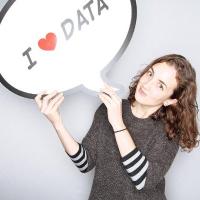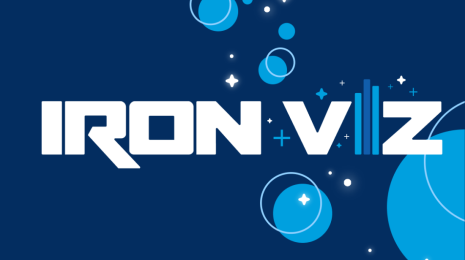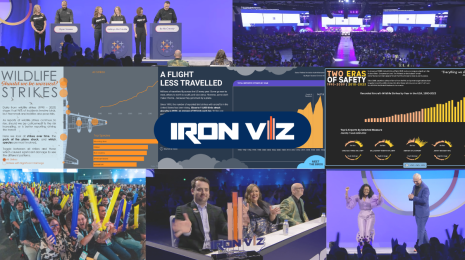What Happened at Fanalytics This Year - Part 2
Note: This post is the second installment of a two-part series on Fanalytics 2017, a community event organized during Tableau Conference. The first piece summarized the presentations given by our four guest speakers.
This year, Fanalytics became a forum for discussing topics that have been debated within the community recently. After some Twitter polling, we identified a list of subjects that we would then submit to our jolly crowd at Fanalytics.
Announcing the #Fanalytics2017 breakout topics! Reply telling us 1. Which you're most interested in, and 2. Is there a topic you'd add? pic.twitter.com/neuqOsSu5Y
— Tableau Public (@tableaupublic) September 29, 2017
We purposedly kept those roundtables informal, offering people to grab a drink and then join discussions they wanted to contribute to. A topic leader, identified at the beginning of the session, animated the discussion at each table and kept track of ideas. A conversation starter one-pager was available for each topic.
At the end of the 45 minutes, each of our topic leaders came to the stage to summarize their table's conversation and ideas. Their report on each topic is what you will find below. It is not meant to be a definitive conclusion, rather a starting point to a broader conversation that you can take part in.
Navigate directly to the topics you feel interested in using this Table of Content:
- Social Impact - Doing good with Tableau Public
- Gender Equity - Making sure women are represented
- Attribution - Giving credit when it’s due
- Career Path - Boosting one’s career with Tableau Public
- Diversity - Showcasing all profiles and geographies
- Open Data - Promoting Open Data as a community
- Learning - Leveraging Tableau Public to up your skills
- Iron Viz Judging - Understanding the existing process
- Hacky vizzes - Active teaching or self-learning?
Social Impact - Doing good with Tableau Public
Led by Kathryn Whiteley, this conversation aimed at identifying how Tableau users can contribute to social and humanitarian projects. Discussions at the table initially focused on existing initiatives within the Tableau community, including Viz for Social Good by Chloe Tseng, Data for a Cause by Olga Tsubiks, or the Tableau Service Corps. The participants suggested to make these options better known, by organizing a social campaign or email blast. This would help reach customers who are not necessarily active on social media but do have an interest in using their Tableau skills to do good.
Another suggestion was to help Tableau User Groups organize hackathons for local causes by providing an "How To Organize a Hackathon" package.
Gender Equity - Making sure women are represented
Led by Ann Jackson, this conversation was all about having a better representation of women in the community, especially at high visibility events like Iron Viz. The conversation initially focused on identifying the reasons why women are less likely to participate in such events, namely:
- Time: women may have more constraints on their time due to family life.
- Fear of spotlight: winning a Feeder Contest means having to compete on the (huge) Iron Viz stage at Tableau Conference. An idea that not all women are comfortable with.
- Social media: it seems there is a chiasm between social media habits of men and women. The latter may not be as active on open platforms like Twitter, where most of the community conversations and sharing happen.
To mitigate time-related issues, suggestions included providing a unique data set for Iron Viz feeders, which would align with the format of the Iron Viz Finals. As finding and cleaning data is a highly time-consuming task, it may help eliminate some of the barriers to entry. Announcing the timing of the feeders earlier could also help participants make time in their busy schedules to create their Iron Viz entries.
To counter both stage anxiety and the social media divide, the group agreed that local events such as Data + Women Meetups really help women to get more comfortable at sharing their work in public, as well as finding peers and mentors who can help them grow. If you would like to start your own local chapter of Data + Women, you can reach out to one of the amazing organizers listed on the D+W website.
Attribution - Giving credit when it’s due
Ken Patton led this discussion, and started his feedback speech by reminding that the Tableau Public philosophy is to learn from others' work. Going down the road of policing the community would thus not be a smart move.
Yet, there's been an increase in reported misappropriation of Tableau Public authors' work in recent months. The attribution table thus discussed options, from gentle to aggressive, that could help mitigate this issue:
- Adopting a Code of Conduct that every Tableau Public user would have to sign, upon registering.
- Creating an Inspiration field as part of the viz details one can edit when publishing to Tableau Public.
- Limiting workbook download to logged in users, so that it's traceable by Tableau Public.
- Having an XML tag mentioning original author embedded in every workbook.
- Following a Git-like forking system, which would allow traceability.
Career Path - Boosting one’s career with Tableau Public
A very popular theme, this topic was led by Josh Tapley, who shared the following recipes from his table's discussions:
- Use Tableau Public as a professional portfolio and keep feeding it regularly.
- Seek feedback (from family, friends, coworkers...) when publishing to Tableau Public, and if possible, share your work on social media too!
- Community events (Tableau User Groups, Data + Women, or other data-related meetups) are opportunities to grow your network.
- If you think Tableau is a key building block for your career, get a formal certification.
Diversity - Showcasing all profiles and geographies
Emily Kund led this discussion and brainstormed on ways to overcome the digital divide that exists both within the United States, and in the international community. Her table advocated getting into schools and training teachers and students on dataviz principles in order to get more data litterate people, able to solve their challenges using data.
On a day to day basis, role modeling is also a powerful way of getting more people interested in data, which in turn can help them solve local problems their communities are facing.
Open Data - Promoting Open Data as a community
Led by Stephen Popick, the goal of this discussion was to identify ways in which the Tableau Public community could better support the open data movement. After all, open data is the raw material of most our vizzes!
The suggestions coming from this table included:
- Providing training on how to resolve the anonymity issue, often a big concern of organizations, making them reluctant to open their data.
- Helping open data publishers understand the importance of providing metadata.
- Encouraging reference of open data sources on Tableau Public vizzes, so that these platforms gain more users and promoters.
- Organizing events as part of the Open Data Day, which will take place on Saturday, 3 March 2018 next year.
Learning - Leveraging Tableau Public to up your skills
Led by Cesar Picco, this table discussed existing learning tools, like Makeover Monday and Workout Wednesday, but most importantly, they brainstormed potential new ones. Their ideas included:
- More content on the sides of data visualization, including data finding, cleanup, storytelling...
- Creation of templates and calculation repository.
- New themed weekdays like "Take apart Tuesday" on retroengineering or "Flashier Friday" on design
- Best practices alerts when publishing on Tableau Public, like "Do you really want to publish your dashboard without a title / with default tooltips / with default colors..."
Slow motion build of popular Tableau Public vizzes as GIF/video material.
Iron Viz Judging - Understanding the existing process
This table was led by Matt Francis and included a judging experiment based on a selection of Iron Viz Silver Screen entries. This experiment is meant to be done individually and within a limited time, in order to replicate the conditions in which Iron Viz Feeders are currently judged by Tableau judges. It shall help us determine whether there is a bias within the Tableau pool of judges.
You can still join it for another week. Results will be analyzed and shared with participants who have left their email.
Hacky vizzes - Active teaching or self-learning?
Led by Kevin Sheridan, this table discussed the ways hacky vizzes could be made more accessible to average users (i.e. all of us who are not Zen Masters). This group came up with the following ideas:
- Create a "Mindblowing" Featured Gallery showing the craziest visualizations.
- Host more hacky content on Tableau Public, and if possible, create a page like D3's wiki gallery on GitHub
- Break down the skills needed to create hacky vizzes (ex: to create a Sankey, you need to know 1. data prep, 2. data layers, 3. table calculations...)
- Ask authors of tutorials to not only show the how, but also explain the why in their step by steps.
We would love to keep the conversation going, either in the Comments section of this blog post, or on Twitter, where you can tag us @tableaupublic. If you feel strongly about one of these topics, speak up!








